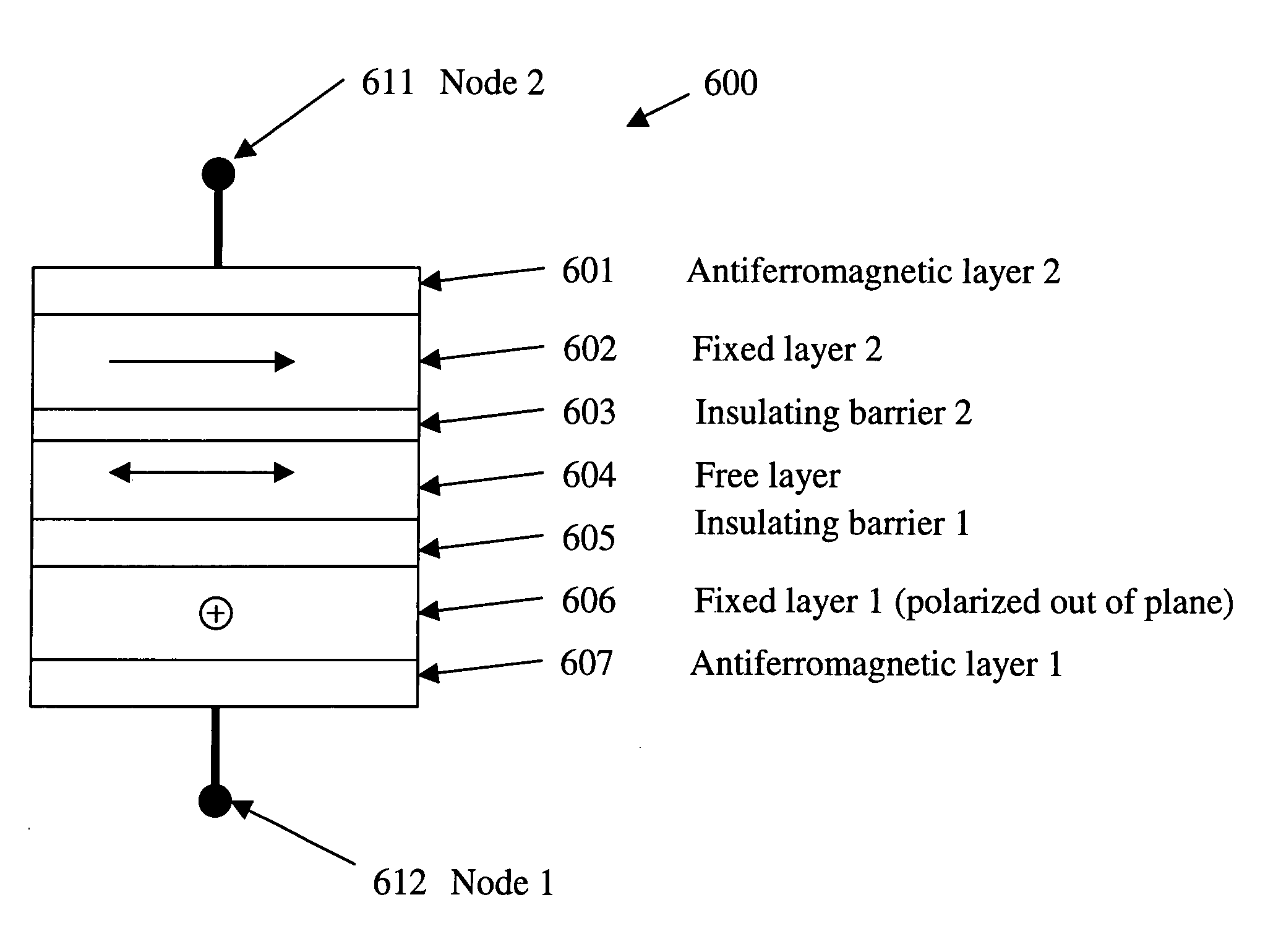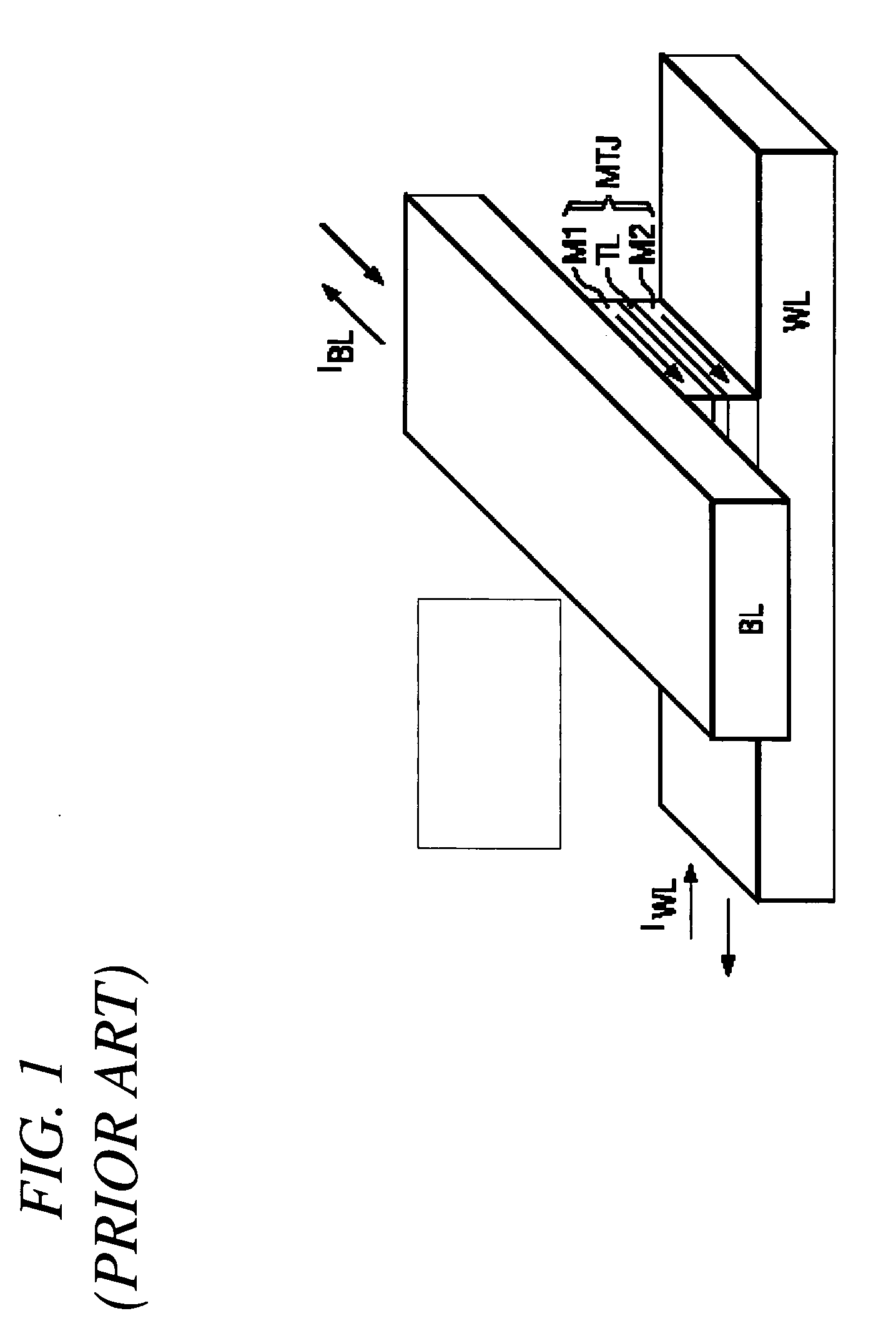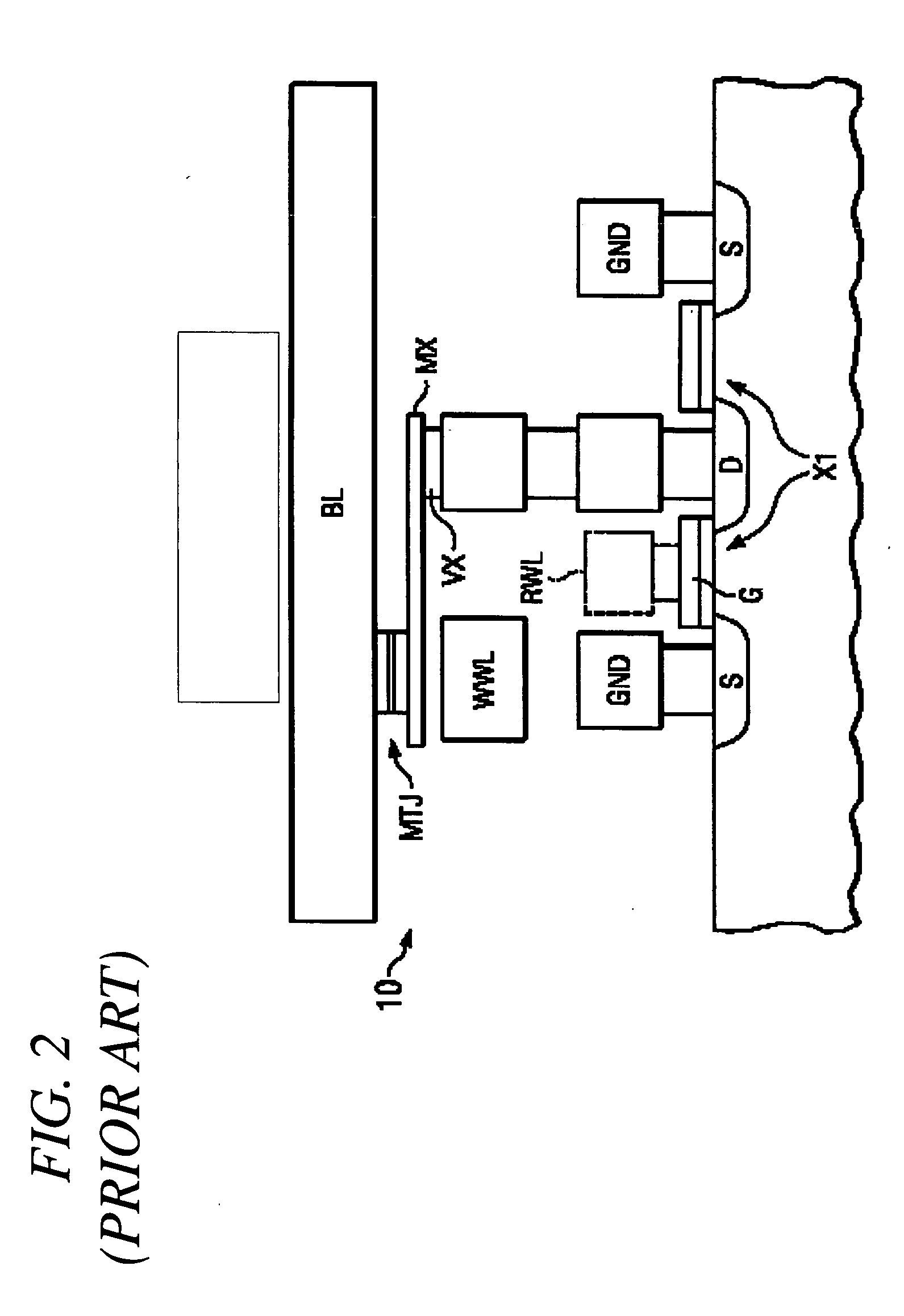Read out scheme for several bits in a single MRAM soft layer
a soft layer and readout technology, applied in the field of magnetic memory cells, can solve the problems of high energy consumption, loss of stored data, and moderate cost of drams, and achieve the effect of reducing manufacturing cost and increasing memory density
- Summary
- Abstract
- Description
- Claims
- Application Information
AI Technical Summary
Benefits of technology
Problems solved by technology
Method used
Image
Examples
Embodiment Construction
[0039] The making and using of the presently preferred embodiments are discussed in detail below. It should be appreciated, however, that the present invention provides many applicable inventive concepts that can be embodied in a wide variety of specific contexts. The specific embodiments discussed are merely illustrative of specific ways to make and use the invention, and do not limit the scope of the invention.
[0040] Embodiments of the present invention will be described with respect to preferred embodiments in a specific context, namely a FET MRAM device configured to store (or be programmed with) a plurality of bits. The invention may be applied to resistive memory devices and other memory devices that include a plurality of current sense amplifiers and reference current sources to detect the resistive state of memory cells configured to store a plurality of bits.
[0041] In resistive memory devices such as MRAMs, even in MRAMs storing only one bit, a current sensing circuit inc...
PUM
 Login to View More
Login to View More Abstract
Description
Claims
Application Information
 Login to View More
Login to View More - R&D
- Intellectual Property
- Life Sciences
- Materials
- Tech Scout
- Unparalleled Data Quality
- Higher Quality Content
- 60% Fewer Hallucinations
Browse by: Latest US Patents, China's latest patents, Technical Efficacy Thesaurus, Application Domain, Technology Topic, Popular Technical Reports.
© 2025 PatSnap. All rights reserved.Legal|Privacy policy|Modern Slavery Act Transparency Statement|Sitemap|About US| Contact US: help@patsnap.com



